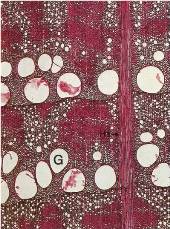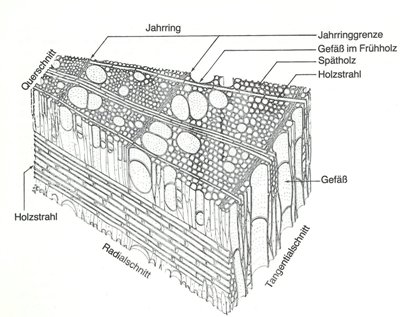Structure of deciduous wood
The evolutionarily younger deciduous wood is much more diverse in its structure than coniferous wood.
It can be divided into three functional groupings.
- Conducting tissue: vessels (tracheae), vessel tracheids, vasicentric tracheids. The two latter cells are intermediate stages in the development from tracheid to vessel.
- Fibre tissue: libriform fibres, fibre tracheids
- Storage tissue: ray parenchyma cells, elongated parenchyma cells, epithelium cells
Characteristic for deciduous wood are the vessels, which are not found in conifers. They can often be seen with the naked eye as small pores in a wood cross section and grooves in a tangential section. Here, depending on arrangement of these vessels, the distinction is made between ring porous wood (e.g. oak, sweet chestnut, ash, black locust, elm), semi-ring porous wood ( e.g. walnut, cherry) and diffuse porous wood (e.g. birch, alder, lime, poplar, red beech, willow). The growth zones (growth ring patterns) and the species-specific arrangement of pore and parenchyma strands are what make up the characteristic grain of each particular wood type.


